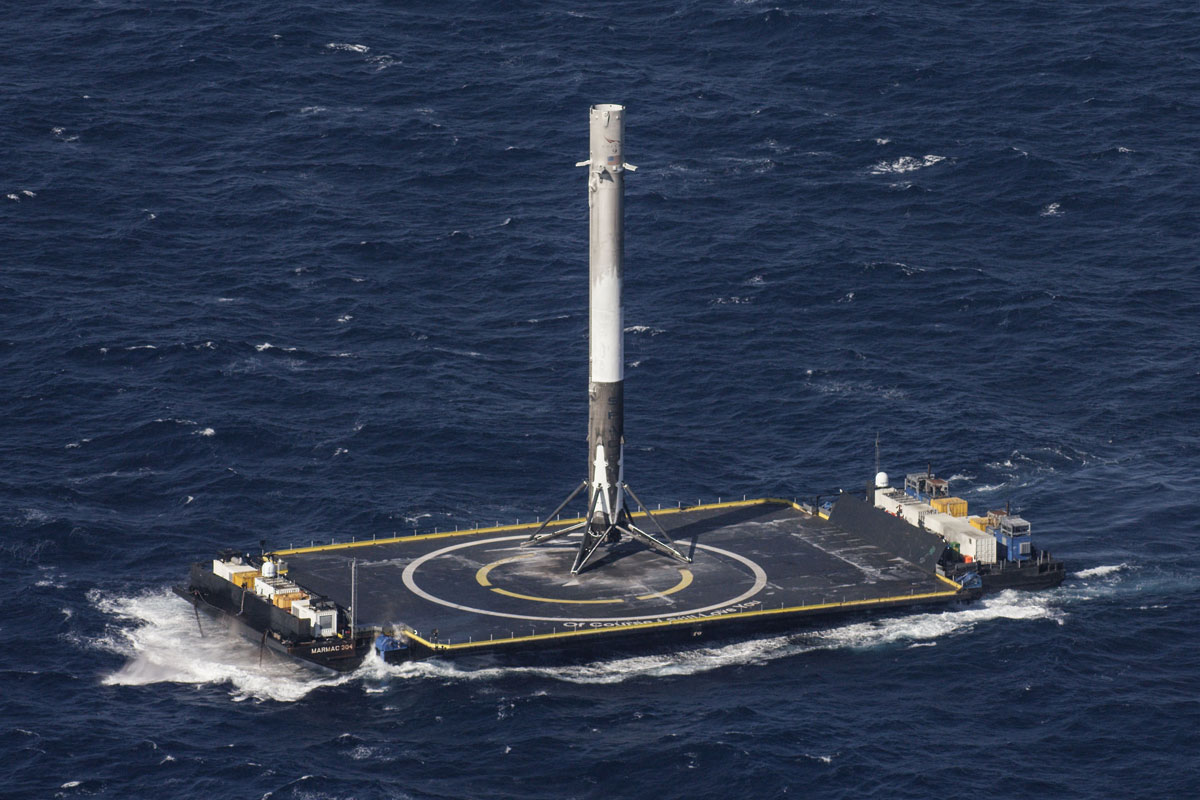
For SpaceX, the fifth time’s the charm as the company successfully landed their Falcon 9 rocket on a drone ship at sea on April 8, 2016. SpaceX made history last December when one of their Falcon 9 rockets successfully landed at Cape Canaveral, but this is the first time it has landed on a small platform in the ocean.
The rocket was carrying an unmanned Dragon cargo spacecraft filled with 7,000 lbs of supplies for NASA and the ISS. Working inside the space station’s multi-windowed Cupola, ESA astronaut Tim Peake commanded the 60-foot-long (18 meters) Canadarm2 robotic arm to reach out and grab the Dragon capsule. [source]
According to The Verge:
Landing at sea can be less tricky than ground landings, and the main reason has to do with fuel. To return back to Earth, the Falcon 9 has to use the fuel leftover from takeoff.
The rocket has to go through a lot to conduct a ground landing. The vehicle has to slow down in the direction it’s heading, completely turn around, and then retread the vertical and horizontal distance it’s covered to get back to the landing site. That requires a lot of extra fuel.
Ocean landings aren’t as complicated as that. SpaceX’s drone ship can position itself in an ideal place to “catch” the vehicle on its more natural path back to Earth. That decreases the distance the rocket needs to travel, as well as the amount of fuel needed to maneuver the Falcon 9 for landing. [source]
The reason this is such a big deal is cost savings. A Falcon 9 rocket costs roughly US$60 million to make but only US$200,000 to refuel. Reusable rockets could bring down launch costs by about 30%, which means more missions for cheaper and hopefully, manned missions and even possibly, space travel/tourism.
This is the fifth time SpaceX has attempted to land a Falcon 9 rocket on an autonomous drone ship. The first two attempts, in January and April of 2015, resulted in failures after contact with the ship. In June 2015 the rocket disintegrated before even entering the landing phase.
Most recently this past January, the Falcon 9 successfully landed for a split-second, only to topple over and eventually explode (see video below).
In addition to supplies and resources for the crew, the payload also contained science experiments, live mice and even a crop of cabbage that will be grown and eaten by the ISS crew members. The payload also included an expandable habitat called the BEAM (Bigelow Expandable Activity Module) which will provide an additional 565 cubic feet of volume for astronauts to move around in.
The BEAM will be attached to the ISS’s Tranquility node and is planned to stay attached to the ISS for two years to see how the module holds up in space. [source] The BEAM is set to become the first ever expandable habitat occupied by humans in space.
The Dragon spacecraft is scheduled to return to Earth on May 11 carrying important results and scientific experiments conducted aboard the ISS.